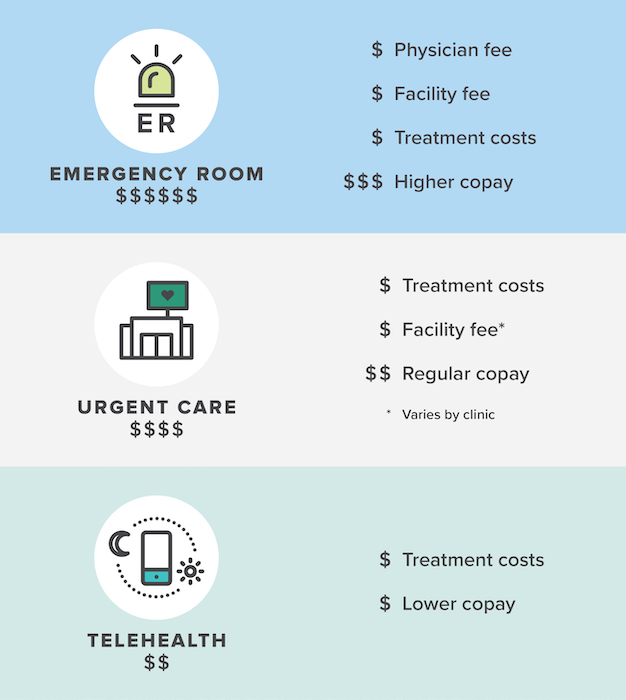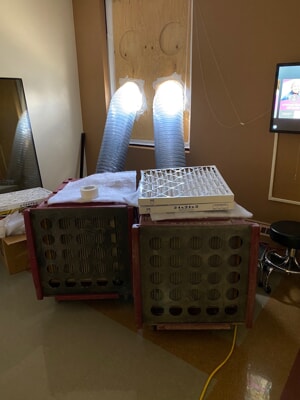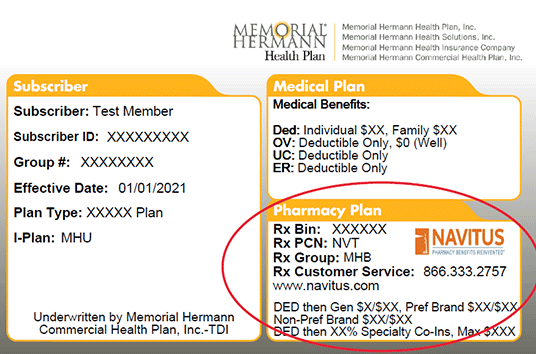Medicare Emergency Room Copay
If the need to go the emergency room suddenly arises, your first instinct is likely to be a phone call to 911—not to wonder how much an emergency room visit may cost you. How can Medicare help pay for your trip to the ER? Anyone with Part B will be covered for trips to a hospital emergency room. You will pay a copayment for the emergency department visit and a copayment for each hospital service. You also pay 20% of the Medicare-approved amount for your doctor’s services and the Part B deductible applies.

Yes, emergency room visits are typically covered by Medicare.
Most outpatient emergency room services are covered by Medicare Part B, and inpatient hospital stays are covered by Medicare Part A.
Medicare Advantage plans (Part C) also cover ER visits. Many Medicare Advantage plans also offer benefits such as prescription drug coverage and home meal delivery for beneficiaries who have returned home from an inpatient hospital stay.
What Medicare Part A covers
Medicare Part A hospital insurance helps cover:
- Inpatient care in a hospital
- Skilled nursing facility care
- Hospice care
- Some home health care services
Medicare Part A is typically premium-free, as long as you or your spouse paid sufficient Medicare taxes while working.
Medicare Emergency Room Copayment

If you go to the emergency room and are admitted as an inpatient, Medicare Part A helps cover some of the costs related to your hospital stay once your Part A deductible is met.
In 2021, the Medicare Part A deductible is $1,484 per benefit period.
What Medicare Part B covers
Medicare Part B is known as medical insurance and helps cover medically necessary services and preventive services, which can include:
- Doctor’s office visits
- Clinical research
- Ambulance services
- Durable medical equipment
- Mental health services
Medicare Part B may also cover services you receive when you visit the emergency room as an outpatient.
Medicare Part B is optional, and if you enroll in Part B you must also enroll in Part A. Unlike Medicare Part A, which is premium-free for most people, you must pay a monthly premium for Medicare Part B.
The standard Part B premium in 2021 is $148.50 per month.
Emergency room copayments and coinsurance
Even if your emergency room visit is covered by Medicare, you are typically responsible for paying a portion of the costs, known as copayments or coinsurance.
Typically, you pay a Medicare emergency room copayment for the visit itself and a copayment for each hospital service.
How you are charged depends on several factors, including which part of Medicare covers your visit (Medicare Part A, Medicare Part B or both) and whether or not you have met your Part A and Part B deductibles.
In 2021, the Part A deductible is $1,484 per benefit period, and the Part B deductible is $203 per year.
Medicare Part A coinsurance
Generally, if you go to the emergency room and are admitted as an inpatient, Medicare Part A will cover a portion of the costs, and in 2021 you pay:
Medicare Emergency Room Copayment
- $0 coinsurance for each benefit period for days 1-60 spent in the hospital
- $371 coinsurance for days 61-90 in each benefit period
- $742 coinsurance per each “lifetime reserve day” beyond day 90 in each benefit period
- All costs beyond lifetime reserve days
Remember, you must meet your Part A deductible before Medicare will pay its share for covered services.
Medicare Part B copayments
If you go to the emergency room and receive care from a doctor but are not admitted as an inpatient, Medicare Part B will typically cover a portion of your medical costs.
After your Part B deductible is met, you typically pay 20 percent of the Medicare-approved amount for most services, and Medicare pays the rest.
Medicare Advantage plans cover emergency room visits
How Much Is Medicare Copay For Er Visit
Medicare Advantage (Medicare Part C) is an alternative to Original Medicare (Medicare Part A and Part B) that provides the same hospital and medical benefits as Original Medicare. This means that Medicare Advantage plans, like Original Medicare, will cover at least some of your emergency room costs.
Most Medicare Advantage plans also cover prescription drugs, and many plans may also offer additional benefits such as dental, vision and hearing coverage.
To learn more about Medicare Advantage plans that may be available in your area and to find out about the emergency room coverage they offer, speak with a licensed insurance agent today.

Explore Medicare Advantage plan benefits in your area

Or call 1-800-557-6059 (TTY: 711) to speak with a licensed insurance agent. We accept calls 24/7!
Anyone who’s ever been in an emergency situation can attest to the fact that you don’t have a lot of time to think during one. Emergencies call for action. This is especially true if you’re the one having a medical emergency. In the heat of the moment, though, you’re almost certainly not thinking about how much these life-saving services are going to cost you. Unfortunately, they can leave you financially crippled, sometimes costing tens of thousands of dollars.
If you’re on Medicare and need emergency care, it can be valuable to know what’s covered before you need to know. So, is a visit to the emergency room totally covered by Medicare? What about an ambulance ride? Are there emergency costs that aren’t covered by Medicare, and can Medigap plans help pay for them?
Medicare Part B can cover emergency services anywhere in the United States. In rare cases, it may also cover them outside of the U.S.Medicare Advantage plans can also provide some coverage for emergency services. Let’s take a closer look at the emergency services coverage and costs you can expect with Medicare.
The Emergency Room and Medicare
What’s Covered?
Generally speaking, services given at a hospital’s emergency department are covered by Medicare Part B if you have one of the following:
- An injury that requires emergency aid
- An illness that develops quickly
- An illness that worsens rapidly
If you’re taken into an emergency department and the cause turns out not to be an emergency, Medicare Part B will likely still cover the services you receive. (For example, you may get coverage for services related to having chest pain that didn’t end up leading to a heart attack.) If you have a Medicare Advantage plan, it will cover many of the same services. Your Medicare Advantage plan cannot require you to go in-network for emergency care.
What Are the Costs?
With Original Medicare, emergency room visits have a few costs associated with them. Under Part B, you’ll owe a copay for each visit you make, as well as a copay for each hospital service you receive. The Part B deductible applies. You’ll also be responsible for 20 percent of the Medicare-approved cost for care for your doctor’s services. If you get admitted to a hospital within three days of your emergency visit there for a related condition, you shouldn’t owe the copay since it should be considered part of an inpatient stay.
Under Part B, you’ll owe a copay for each visit you make, as well as a copay for each hospital service you receive.
For the costs for emergency room coverage in your Medicare Advantage plan, please refer to your specific plan.
Medicare Coverage and Emergency Transportation
United Healthcare Copay Amounts
What’s Covered?
Medicare Part B covers medically-necessary ambulance services to or from the nearest appropriate hospital, critical access hospital, or skilled nursing facility. If there aren’t any care-appropriate facilities in your area, Medicare should pay for transportation outside your area.
Medicare will only cover emergency ambulance transportation when your health is in serious danger and you can’t be transported another way.
It’s important to note, Medicare will only cover emergency ambulance transportation when your health is in serious danger and you can’t be transported another way. For example, it may cover this transportation if you need skilled medical treatment en route or are unconscious. It may cover emergency air transportation in situations where you need immediate care and ground transportation can’t easily reach you, you have a long distance to travel for care, or something is obstructing your travel on the ground.
Note: Medicare may cover non-emergency ambulance trips if you have a written doctor’s order stating they’re medically necessary.
What Are the Costs?
As with emergency department services, using emergency transportation will cost you 20 percent of the Medicare-approved amount with Part B. The Part B deductible will still apply. Your costs may be different if you end up going to a critical access hospital or an entity owned by one. You may also choose to go to a different hospital than the nearest facility that can provide your necessary care, but you’ll be charged for the difference in transportation costs.
Medicare Er Copay
Medicare Advantage plans may offer similar coverage, but the costs will vary from plan to plan. Please refer to your individual plan for accurate details on coverage and costs.
Extra Coverage to Plug the (Medi)Gaps
If you’ve got Original Medicare, and want some additional help with emergency costs, a Medicare Supplement (Medigap plan) may offer the assistance you’re looking for.
A Medicare Supplement plan is a way you can get extra coverage for emergency costs.
Tricare Emergency Room Copay
All Medigap plans cover Part B copayments in some form, with most covering 100 percent of Part B copayments/coinsurance. Two Medigap plans, Plans C and F, even covered the Part B deductible, though these were discontinued in 2020. Other plans can also help with emergency medical costs incurred in other countries, which are rarely covered by Medicare. If you’re interested in one of these plans, or a Medicare Advantage plan which can also offer extra coverage, finding a plan couldn’t be simpler. Check out the Medicareful Plan Finder to see what plans are available in your area.
● ● ●
Ultimately, if you need something to save your life in an emergency, we believe you should get the service. Costs can wait. Your life is what’s important. But, it’s also nice to know that there’s a good chance that your Medicare plan will have you covered.
